Ferrari NV unveiled its first production-volume plug-in hybrid, the 1,000-horsepower SF90 Stradale, as the supercar maker aims to keep pace with tightening emissions regulations, while still satisfying its power-hungry customers.
The model is to begin shipping in the first half of next year, people familiar with the matter said.
Company chief executive officer Louis Camilleri described the new car as “astounding, fast and completely revolutionary.”
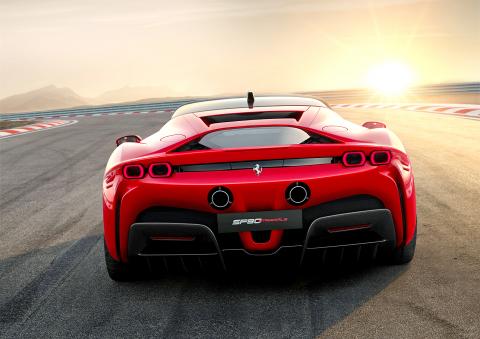
Handout courtesy of Ferrari / Reuters
It would be equipped with three electric motors, adding 220 horsepower to a 780-horsepower V8 turbo combustion engine — the highest output of any eight-cylinder engine in Ferrari history, according to a statement on Wednesday.
“It will be silent. We don’t want to hide that this car can run electric too,” company chief technology officer Michael Leiters said.
“This is the first step in a direction that Ferrari is committed to pursuing,” company chief executive officer Louis Camilleri said.
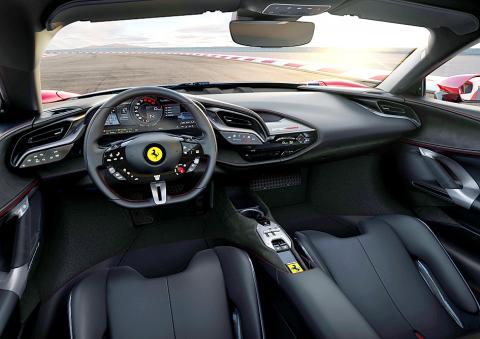
Handout courtesy of Ferrari / Reuters
By entering this segment “I am convinced that we will attract new customers who will quickly become loyal ones,” Camilleri added.
The Stradale is not the first hybrid Ferrari has ever made. In 2013, the company began selling a limited-edition supercar with the technology, the 1.2 million euro (US$1.34 million) LaFerrari, which was followed by an open-top version.
However, where only 499 examples of the first model were made, the low-slung Stradale would be part of Ferrari’s ongoing lineup.
Unlike the LaFerrari, it would be able to run in electric-only mode for at least 25km, “ideal for city center driving or any other situation in which the driver wishes to eliminate the sound of the Ferrari V8,” the statement said.
The Stradale represents the initial thrust of the Italian sports-car brand’s plan to comply with tightening rules on carbon emissions in the EU. Maranello-based Ferrari expects to equip about 60 percent of total production with a hybrid engine by 2022.
The new model is also the first Ferrari sports car to be equipped with four-wheel drive, a step necessary to fully capture the power unleashed by the hybrid powertrain. From a standing start, it would be able to reach 100kph in 2.5 seconds.
Ferrari did not disclose the price of the new car. It would fall somewhere between the 300,000 euro Ferrari 812 and the LaFerrari, company chief marketing and commercial officer Enrico Galliera said at an unveiling event on Wednesday.
While Ferrari trails much of the industry in shifting to electrified vehicles, plans have been in the works since at least 2015, when the late-chief executive officer Sergio Marchionne spun off the 72-year-old company from Fiat Chrysler Automobiles NV.
Hybrid power units where introduced into Formula One racing in 2014, helping to facilitate the transfer of technology to Ferrari road cars.
At the time, Ferrari was working on a battery-powered supercar to challenge Tesla Inc.
A fully electric supercar could come after 2022, Marchionne’s successor, Louis Camilleri, said in January.
The unveiling comes in the same week that Fiat Chrysler pitched a merger deal with French peer Renault in part to catch up in the electric vehicle market.
There is also an emerging new breed of high-performance, or premium, electric sports cars. These so-called supercars include Tesla’s upcoming Roadster Founder Series, which is to sell for more than US$200,000 and the Rimac Concept Two, priced in the region of US$2 million.
The luxury carmaker Ferrari has escaped much of the pressure that has beset auto industry, where manufacturers are struggling with declining markets and electric-vehicle investments that dent profits.
Supplying cars to the world’s wealthiest people, Ferrari trades with a valuation on par with luxury retailers like Prada SpA, and its 14 percent jump in first-quarter profit beat the highest estimate.
About 2,000 selected customers from all over the world were invited to Ferrari from Wednesday evening to Friday to view and reserve the new car, which would be delivered within 12 months.
Other buyers would have to wait more than a year for their order. Ferrari sells more than 65 percent of its cars to clients who already own one.
Camilleri said that the company aims to generate 2 billion euros in adjusted earnings before interest, tax, depreciation and amortization by no later than 2022.
To get there, Ferrari is planning more profit-boosting, limited-edition sports cars, saying last year that it planned 15 new models, including hybrids, a utility vehicle and special editions, in its drive to hit the company’s mid-term earnings target.
Additional reporting by Reuters
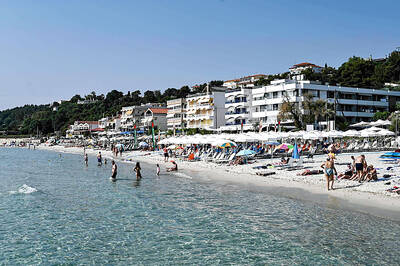
Greek tourism student Katerina quit within a month of starting work at a five-star hotel in Halkidiki, one of the country’s top destinations, because she said conditions were so dire. Beyond the bad pay, the 22-year-old said that her working and living conditions were “miserable and unacceptable.” Millions holiday in Greece every year, but its vital tourism industry is finding it harder and harder to recruit Greeks to look after them. “I was asked to work in any department of the hotel where there was a need, from service to cleaning,” said Katerina, a tourism and marketing student, who would
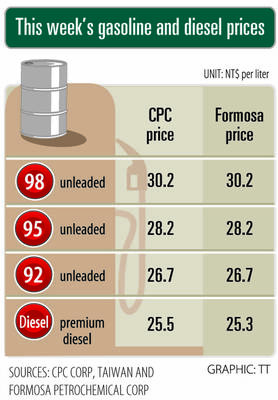
i Gasoline and diesel prices at fuel stations are this week to rise NT$0.1 per liter, as tensions in the Middle East pushed crude oil prices higher last week, CPC Corp, Taiwan (台灣中油) and Formosa Petrochemical Corp (台塑石化) said yesterday. International crude oil prices last week rose for the third consecutive week due to an escalating conflict between Israel and Iran, as the market is concerned that the situation in the Middle East might affect crude oil supply, CPC and Formosa said in separate statements. Front-month Brent crude oil futures — the international oil benchmark — rose 3.75 percent to settle at US$77.01

Merida Industry Co (美利達) has seen signs of recovery in the US and European markets this year, as customers are gradually depleting their inventories, the bicycle maker told shareholders yesterday. Given robust growth in new orders at its Taiwanese factory, coupled with its subsidiaries’ improving performance, Merida said it remains confident about the bicycle market’s prospects and expects steady growth in its core business this year. CAUTION ON CHINA However, the company must handle the Chinese market with great caution, as sales of road bikes there have declined significantly, affecting its revenue and profitability, Merida said in a statement, adding that it would
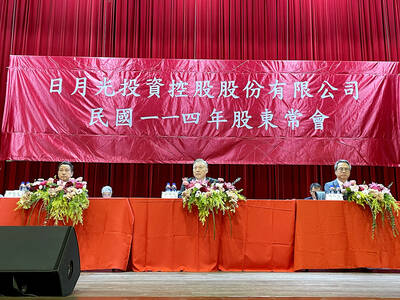
UNCERTAINTIES: The world’s biggest chip packager and tester is closely monitoring the US’ tariff policy before making any capacity adjustments, a company official said ASE Technology Holding Inc (日月光投控), the world’s biggest chip packager and tester, yesterday said it is cautiously evaluating new advanced packaging capacity expansion in the US in response to customers’ requests amid uncertainties about the US’ tariff policy. Compared with its semiconductor peers, ASE has been relatively prudent about building new capacity in the US. However, the company is adjusting its global manufacturing footprint expansion after US President Donald Trump announced “reciprocal” tariffs in April, and new import duties targeting semiconductors and other items that are vital to national security. ASE subsidiary Siliconware Precision Industries Co (SPIL, 矽品精密) is participating in Nvidia